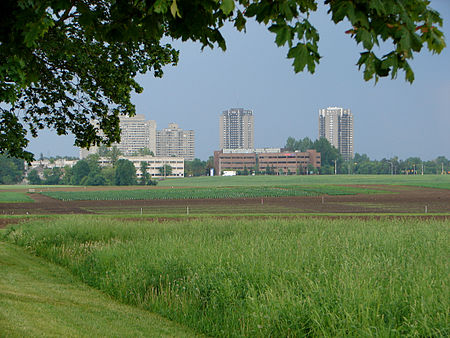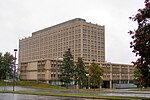Central Experimental Farm

The Central Experimental Farm (CEF), commonly known as the Experimental Farm, is an agricultural facility, working farm, and research centre of the Science and Technology Branch, formerly the Research Branch, of Agriculture and Agri-Food Canada. As the name indicates, this farm is centrally located in and now surrounded by the City of Ottawa, Ontario, Canada. The 4 square kilometres (1.5 sq mi) farm is a National Historic Site of Canada and most buildings are protected and preserved as heritage buildings. The CEF original intent was to perform scientific research for improvement in agricultural methods and crops. While such research is still being conducted, the park-like atmosphere of the CEF has become an important place of recreation and education for the residents of Ottawa. Furthermore, over the years several other departments and agencies have encroached onto the CEF property, such as Natural Resources Canada, National Defence (HMCS Carleton on Dow's Lake), and the Ottawa Civic Hospital (helicopter pad). The CEF is bordered by the Rideau Canal (a National Historic Site as well) to the east, Prince of Wales Drive to the South-East, Baseline Road to the south, and Merivale and Fisher Roads to the west, and Carling Avenue to the north.
Excerpt from the Wikipedia article Central Experimental Farm (License: CC BY-SA 3.0, Authors, Images).Central Experimental Farm
Cow Lane, (Old) Ottawa River
Geographical coordinates (GPS) Address Nearby Places Show on map
Geographical coordinates (GPS)
| Latitude | Longitude |
|---|---|
| N 45.382537 ° | E -75.713654 ° |
Address
Experimental Farm Weather Station
Cow Lane
K1Z 6P7 (Old) Ottawa, River
Ontario, Canada
Open on Google Maps








